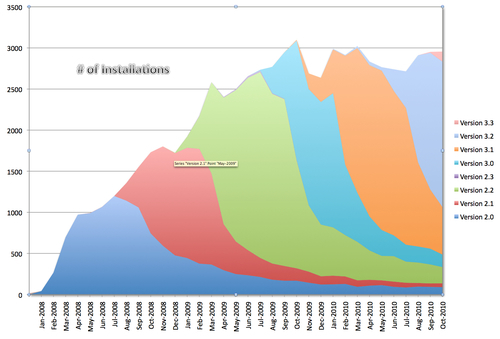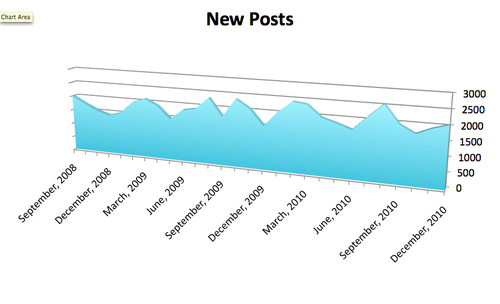Every organization should do its own evaluation of CRM options using criteria appropriate to their particular needs, weighing each suitably to provide the right overall balance. This section summarizes some of the reasons why CiviCRM is right for many non-profit, advocacy, and member-based organizations.
More than anything else, what sets CiviCRM apart from other competing programs is that it is designed specifically to meet the needs of non-profits, and provides a well-integrated platform that addresses all their basic needs. This avoids or alleviates the complexities, problems, time, and expenses associated with running separate systems for things such as donations, e-mailing, events, and membership, or trying to programmatically integrate them.
CiviCRM is well-suited to the needs of many kinds and sizes of organizations:
Non-profits
Non-governmental organizations
Government agencies and the offices of elected representatives
Membership-based organizations
Advocacy organizations
Grant giving organizations
Service providing organizations
Neighborhood associations
Political campaigns and organizations
Business associations
Government entities
Unions
Sports clubs
Dance studios
Many CRMs are built around common workflows in for-profit businesses that don't always map well into the non-profit world. The sales funnel model and terminology underlying sales force automation, for example, may not map well to the activities in an awareness raising campaign. Substituting some terms and adding some non-profit specific things, as Convio Common Ground does with Salesforce, doesn't always overcome the issues with the underlying model.
NTEN's 2007 CRM Satisfaction Survey determined the following:
The three systems that were most commonly used by all organizations—CiviCRM, Salesforce, and Convio—were ranked first, second, and sixth, respectively in willingness to recommend respectively.
NTEN's 2009 Data Ecosystem Survey reinforced this result by finding that the overall happiness of organizations was similar, with grades of B+, B, and B- going to the top three tools: CiviCRM, Salesforce, and Convio, respectively.
A significant problem with many proprietary CRMs is the difficulty organizations face in moving to a different vendor. As a free and open source software system, CiviCRM will always let organizations using it get their data out if they ever want to move to a different system. The ability to directly access and work with your data for customization, advanced database queries, data migration, and so on is often quite important.
Some proprietary systems are only offered by a single vendor. Service outages, poor help response times, or unhelpful technical support responses may leave your organization with no option but to switch to a different CRM just to deal with vendor issues. By contrast, the growing pool of integrators, trainers, and consultants for CiviCRM (http://civicrm.org/professional) enables organizations to shift from one provider to another without having to change CRMs.
Unlike with some proprietary systems, there is no vendor lock-in with CiviCRM.
Drupal and Joomla! are commonly used CMSs (Content Management Systems) in the non-profit world. CiviCRM integrates well with both of them. This is important because it allows your CRM to easily present public or staff facing forms and listings on the Web. Easy configuration of donation and event signup forms and self-serve functionality for membership signup and renewals are incredibly important to many organizations.
There are significant differences between the capabilities each content management system provides. The most notable one for CiviCRM is that it has more advanced access control capabilities, and more flexible repurposing of content when integrating with Drupal.
Drupal's use as a framework for developing customized sites, especially the way it facilitates mashing together data and functionality from numerous existing modules, can take advantage of CiviCRM's significant and growing support for important core and contributed modules. This includes exposing CiviCRM data in Views, Drupal 6 CCK fields for CiviCRM contacts, and synchronization of roles, groups, memberships, and organic groups in various ways. This allows user permissions on your website, e-mail privileges, membership status, group collaboration spaces, and expressed interests in topics to be mixed and matched in interesting and useful ways.
On the Joomla! side, there is a growing list of extensions available that tap into CiviCRM resources to display content in modules, limit access to content authoring, and control user authentication and account creation based on membership status.
In both cases, CiviCRM lets you take advantage of a powerful open source content management system, integrating your contact database directly into your organization's website. CiviCRM has a history of keeping up with developments in both CMSs, and there is every indication that this integration will continue and deepen with Drupal 7 and Joomla! 1.6 support in CiviCRM 4.0.
The common saying that free and open source software is free like kittens rather than free like beer applies to CiviCRM. The total cost of ownership of a software system is an important metric for deciding which is more appropriate. Open source software costs for a system like CiviCRM are different from those of proprietary systems. The absence of an upfront purchase cost is not the end of the story. Costs of maintaining the system over its whole life need to be calculated. Instead of one-time purchase costs, or annual or monthly software license costs, there are likely to be additional expenditures on installation, training, and support. Depending on an organization's CRM needs, number of CRM users, and staff competencies, CiviCRM may be less expensive, or sometimes much less expensive, than the other alternatives.
The "free" in "free and open source software" is primarily the freedom to modify the software to meet one's needs (see http://wiki.civicrm.org/confluence/display/CRM/Developing+with+the+CiviCRM+team). This is certainly an advantage for many organizations with resources that are unable to get proprietary systems adapted as they require, or that are unwilling to let another organization drive the feature development roadmap and timeframe of their enterprise CRM system.
CiviCRM has a strong, growing open source community and software ecosystem. CiviCRM is averaging over 8,000 downloads per month in 2010. There have been over 12,000 installations since version 2.0, with around 3,000 active CiviCRM installations in the fall of 2010 (see the following figure which counts most sites that have had administrative settings changed or reviewed during a month). Note that the apparent growth during 2.0 is greatly exaggerated by not being able to portray upgrades from earlier versions. Also note that the number of active sites is not being directly measured; so during upgrade, there are spikes as new and old sites are both counted, and on-going improvements to the usability and administrative ease of the system is likely to increase the number of active sites that are not counted in the following graph:

In terms of development energy, over 90 individuals and consultants donated to support enhancing CiviCRM during the fall of 2010. In addition to these Make It Happen contributions, there have been a large number of other contributions from the community in terms of code patches for new features, forum suggestions have sponsored major new features, including:
BC Physician Health Program
Front Line International Foundation for Human Rights Defenders
Greater Manchester Centre for Voluntary Organisation
International Mountain Biking Association
US Public Interest Research Group
Quest Scholars
Alpha International
New York State Senate
Progressive Technology Project
The number of issues reported and patches submitted by the community has increased significantly over the years.
While some might perceive more issues being filed by the community as a problem (people are finding the product buggy), it is very healthy from another perspective. For example, the most recent spike in community issues occurred during the alpha and beta testing preceding the major 3.0 release. Community members were encouraged to download, install, and test pre-production versions in order to provide feedback on features, usability, ease of upgrading, as well as bugs before the new version was released. This push was very successful and led to a spike in patches submitted, as illustrated in the following histogram, making it a better and more bug-free release. During 2010, there has been an effort to get consultants and better-resourced users to contribute patches in order to allow the core team to focus on enhancements for new releases.

Over 2,000 new posts appeared on the forum per month in 2010, continuing the gradual growth of previous years for this metric.

This relevant new content supported a steady and larger growth in page views, as illustrated in the following graph:

One unique aspect of CiviCRM that sets it apart from many other open source projects is the presence of a core development team working full-time on project development. While community involvement is a great sign of project health, the presence of a core development team has ensured steady releases, an aggressively-planned project roadmap, and more responsive support patching bugs and supporting users.
Extensive administrator, user, and developer documentation available at http://wiki.civicrm.org is updated for each version of CiviCRM before it is released. In addition, Understanding CiviCRM: A Comprehensive Guide is available for free at http://en.flossmanuals.net/civicrm. Often when an issue arises, others have tried to tackle the same challenge, and a record of how they were helped to solve their issue can be found by searching in the community forums at http://forum.civicrm.org.
One of the challenges faced by users of some open source software compared to proprietary software has been the difficulty of assuring that support will be available when needed. In addition to the paid support offerings from numerous professional CiviCRM consultants mentioned previously, the CiviCRM community and core team are renowned for their quick and generous replies to questions in the forums. For those developing in CiviCRM, there is also a #civicrm irc channel on http://freenode.net, where one can usually find the core team and other knowledgeable community members responding to more challenging inquiries.



